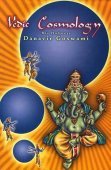Thakura, Ṭhākura: 7 definitions
Introduction:
Thakura means something in the history of ancient India, Marathi, Jainism, Prakrit, Hindi. If you want to know the exact meaning, history, etymology or English translation of this term then check out the descriptions on this page. Add your comment or reference to a book if you want to contribute to this summary article.
Alternative spellings of this word include Thakur.
India history and geography
Source: What is India: Inscriptions of the ŚilāhārasṬhākura (collector) is the official title of a minister belonging of the administration of the state during, the rule of the Śilāhāra dynasty (r. 765-1215 A.D.).—The administration of the State was carried on with the help of Governors (rāṣṭrapati), Collectors (viṣayapatis) and village headmen (grāmapati). In some later records like the Dive Āgar plate of Mummuṇi, they are called sāmanta (Governor), nāyaka (the Commissioner of a division) and ṭhākura (the Collector of a district). The Governors of provinces were often military officers, who were called daṇḍādhīpati.
Source: Cologne Digital Sanskrit Dictionaries: Indian Epigraphical GlossaryṬhakura or Ṭhākura.—(EI 23, 33; CII 4), same as Ṭhakkura. Note: ṭhakura is defined in the “Indian epigraphical glossary” as it can be found on ancient inscriptions commonly written in Sanskrit, Prakrit or Dravidian languages.
--- OR ---
Ṭhākura.—(LP), Gujarātī; often a member of the Koli caste of Gujarat, who generally tries to detect thieves, etc. (LP), Gujarātī Ṭhākor, the chief among certain tribes of Rajputs; a small chieftain. Note: ṭhākura is defined in the “Indian epigraphical glossary” as it can be found on ancient inscriptions commonly written in Sanskrit, Prakrit or Dravidian languages.

The history of India traces the identification of countries, villages, towns and other regions of India, as well as mythology, zoology, royal dynasties, rulers, tribes, local festivities and traditions and regional languages. Ancient India enjoyed religious freedom and encourages the path of Dharma, a concept common to Buddhism, Hinduism, and Jainism.
Languages of India and abroad
Marathi-English dictionary
Source: DDSA: The Molesworth Marathi and English Dictionaryṭhākūra (ठाकूर).—m (ṭhakkura S through H) A tribe or an individual of it. They inhabit woods and wilds (esp. of N. Konkan̤). 2 A chief among certain castes of Rajputs, Bhils &c., a title or compellation of respect. 3 The Supreme God: also an idol or a god. 4 A family priest among certain tribes of Shudras.
Source: DDSA: The Aryabhusan school dictionary, Marathi-Englishṭhākūra (ठाकूर).—m A tribe or an individual of it.
Marathi is an Indo-European language having over 70 million native speakers people in (predominantly) Maharashtra India. Marathi, like many other Indo-Aryan languages, evolved from early forms of Prakrit, which itself is a subset of Sanskrit, one of the most ancient languages of the world.
Hindi dictionary
Source: DDSA: A practical Hindi-English dictionaryṬhākura (ठाकुर) [Also spelled thakur]:—(nm) a lord, master; God; God's idol; (title for a) [kṣatriya; ~dvārā] a temple; ~[bāḍī] a temple.
...
Prakrit-English dictionary
Source: DDSA: Paia-sadda-mahannavo; a comprehensive Prakrit Hindi dictionaryṬhakura (ठकुर) in the Prakrit language is related to the Sanskrit word: Ṭhakkura.
Ṭhakura has the following synonyms: Ṭhakkura.
Prakrit is an ancient language closely associated with both Pali and Sanskrit. Jain literature is often composed in this language or sub-dialects, such as the Agamas and their commentaries which are written in Ardhamagadhi and Maharashtri Prakrit. The earliest extant texts can be dated to as early as the 4th century BCE although core portions might be older.
Nepali dictionary
Source: unoes: Nepali-English DictionaryṬhākura (ठाकुर):—n. 1. master; owner; 2. god; 3. a Nepalese surname;
Nepali is the primary language of the Nepalese people counting almost 20 million native speakers. The country of Nepal is situated in the Himalaya mountain range to the north of India.
See also (Relevant definitions)
Starts with: Thaku, Thakuradasavilasa, Thakuradvara, Thakurai, Thakuraiya, Thakuraji, Thakuraka, Thakuraki, Thakurasuhati.
Ends with: Bhuithakura, Harakumarathakura, Mahalu Thakura, Shrimali Khetaya Thakura, Thaku.
Full-text (+22): Thakkura, Thakari, Bhogaratikirtana, Bhajana Rahasya, Tripura, Garbhadhanadidashasamskarapaddhati, Mandhata, Vidvadranjana, Narayani, Mahalu Thakura, Rasikaranjana, CaitanyaShikshamrita, Thakuradvara, Thakur, Pancasayaka, Madhuryakadambini, Shrimali Khetaya Thakura, Thakuraki, Baladevavidyabhushana, Dankhina.
Relevant text
Search found 11 books and stories containing Thakura, Ṭhākura, Ṭhākūra, Ṭhakura; (plurals include: Thakuras, Ṭhākuras, Ṭhākūras, Ṭhakuras). You can also click to the full overview containing English textual excerpts. Below are direct links for the most relevant articles:
Chaitanya Bhagavata (by Bhumipati Dāsa)
Verse 1.16.157 < [Chapter 16 - The Glories of Śrī Haridāsa Ṭhākura]
Verse 1.16.113 < [Chapter 16 - The Glories of Śrī Haridāsa Ṭhākura]
Gauḍīya-bhāṣya < [Chapter 1 - Summary of Lord Gaura’s Pastimes]
Shrimad Bhagavad-gita (by Narayana Gosvami)
Preface (to the Fourth English Edition)
A Brief Life Sketch of Śrīla Viśvanātha Cakravartī Thākura < [Introduction (to the Hindi edition)]
Verse 13.26 < [Chapter 13 - Prakṛti-puruṣa-vibhāga-yoga]
Srila Gurudeva (The Supreme Treasure) (by Swami Bhaktivedanta Madhava Maharaja)
Saṃskāras, impressions on the heart < [Chapter 2.12 - Early ISKCON Conversations with Śrīla Gurudeva]
The Journey from Śrī Purī-dhāma to Śrī Navadvīpa-dhāma < [Chapter 2.19 - The Concluding Transcendental Pastimes]
Representative Heads West < [Chapter 2.17 - Beginning of Śrīla Gurudeva's Preaching in the West]
Bhajana-Rahasya (by Srila Bhaktivinoda Thakura Mahasaya)
Foreword (translated from the Hindi edition)
Editor’s Preface to the English Edition
Garga Samhita (English) (by Danavir Goswami)
Verse 5.24.47 < [Chapter 24 - The Killing of the Kola Demon]
Verse 5.24.83 < [Chapter 24 - The Killing of the Kola Demon]
Verses 5.24.64-65 < [Chapter 24 - The Killing of the Kola Demon]
Related products


